|
Builder: The Rudolph Wurlitzer Co., Opus 1859, 1928 Manuals: 3 Ranks: 13 Action: Electro-pneumatic chests Notes: The pipes are located in two chambers on opposite sides of the chancel area, with the console in front of the left chamber opening. The organ is an original installation. The current church building was built in 1924 and the organ installed in 1928. According to the currrent organist, it is one of only two “Church Model” Wurlitzers in Minnesota. [The other is at Mindekirken in Minneapolis.] Notes below are from Velda Graham, who visited the church during the planning stages of the 2017 Organ Historical Society national convention in the Twin Cities. Condition of organ: On Thursday, Oct. 8, 2015, Bill Percy and I visited Lester Park United Methodist Church to investigate their Wurlitzer organ. We spent about an hour at the church. Pastor Sam Kautz opened up the pipe chambers for us and gave us a little bit of information about the organ’s history. We also spoke with Darrell O’Day, the current organist, by phone. The organ is in regular use, but it is not in good condition. Many notes are dead, the tremulants don’t work, the Chrysogdolt [sic] doesn’t speak, etc. The organ had been maintained by Steve Lethert in the past, but since Steve reduced the number of organs he is willing to service in the area a few years ago, no one has been servicing or tuning it. It is in poor shape and I would suspect that the church doesn’t have the financial resources to keep it maintained. Lester Park UMC has been in poor financial condition with a dwindling membership for many years. About 4 years ago, the MN Conference of the United Methodist Church tried to merge this congregation with a nearby Lutheran congregation in an effort to help both congregations remain viable. The merger was turned down by both congregations. Average worship attendance is now about 50. While the installation of a Wurlitzer in a church is unusual and interesting, both Bill and I feel that the organ is not even close to “good enough” condition for a visit by the OHS. And, its condition is made even more precarious due to the current organist’s retirement at the end of this year. It will be difficult to find someone to replace him. |
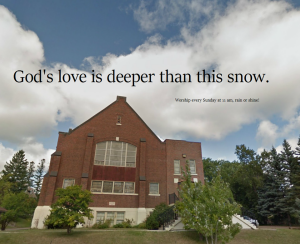 |
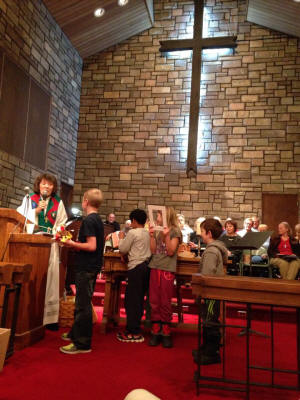 |
|
|
GREAT: 16’ Tuba 16’ Diapason 16’ Vox Humana 8’ Tuba 8’ Open Diapason 8’ Violin Diapason 8 Tibia Clausa 8’ Clarinet 8’ Oboe Horn 8’ Salicional 8’ Voix Celeste 8’ Quintadena 8’ Flute 8’ Vox Humana 8’ Dulciana 8’ Unda Maris 4’ Octave 4’ Salicional 4’ Voix Celeste 4’ Quintadena 4’ Flute 4’ Vox Humana 4’ Dulciana 4’ Unda Maris 2 2/3 Twelth 2’ Piccolo Cathedral Chimes Octave Great Swell Sub Great Swell Unison Great Choir to Great |
CHOIR: 16’ Dulciana 8’ Violin Diapason 8’ Clarinet 8’ Oboe Horn 8’ Quintadena 8’ Flute 8’ Vox Humana 8’ Dulciana 8’ Unda Maris 4’ Quintadena 4’ Flute 4’ Dulcet 4’ Unda Maris 2’ Piccolo Chrysoglott Sub Octave Unison Off Octave Swell to Choir |
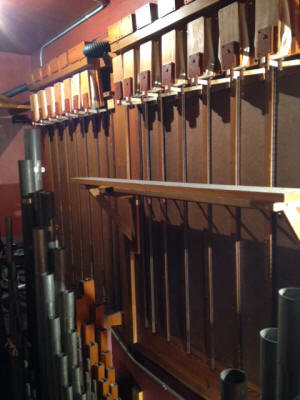 |
|
|
SWELL: 16’ Bourdon 16’ Vox Humana 8’ Tuba 8’ Violin Diapason 8’ Tibia Clausa 8’ Oboe Horn 8’ Salicional 8’ Voix Celeste 8’ Quintadena 8’ Flute 8’ Vox Humana 4’ Piccolo 4’ Quintadena 4’ Flute 4’ Vox Humana Cathedral Chimes Chrysoglott Sub Octave Unison Off Octave Choir to Swell Other Controls Great 2nd Touch: 16' Tuba 8' Tibia Clausa Swell to Great Swell 2nd Touch: 8' Tuba 8' Tibia Clausa Swell to Choir Main Tremulant Solo Tremulant Vox Tremulant Suitable Bass & Release 10" wind pressure Main chamber 8' Violin Diapason 61 8' Salicional 73 8' Voix Celeste 73 8' Clarinet 61 16' Bourdon/Flute 97 8' Quintadena 73 8' Vox Humana 61 16' Dulciana 85 8' Unda Maris 61 Solo Chamber 16' Tuba Horn 73 16' Diapahonic Diapason 85 8' Tibia Clausa 73 8' Oboe Horn 73 Chrysoglott 49 bars Cathedral Chimes 25 tubes |
PEDAL: 16’ Tuba 16’ Diapason 16’ Bourdon 16’ Dulciana 8’ Tuba 8’ Diapason 8’ Cello 8’ Flute 8’ Dulciana Great to Pedal Swell to Pdeal Choir to Pedal |
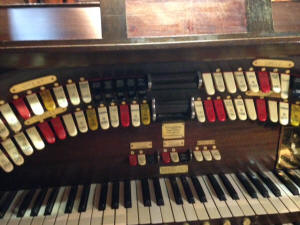 |
|
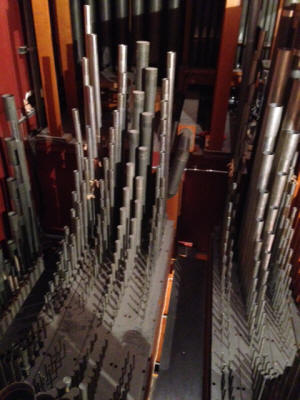 |
|